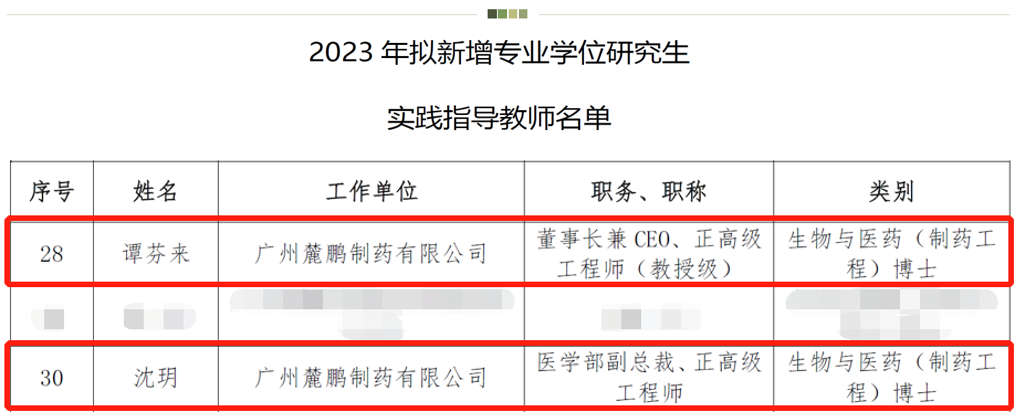News & Events
喜讯| 麓鹏制药谭芬来、沈玥博士被聘任为暨南大学校外博导
22 Sep 2023 02:54:00
近日,暨南大学公布《暨南大学关于公布2023年度新增专业学位研究生指导教师名单的通知》,广州麓鹏制药有限公司董事长谭芬来博士、医学副总裁沈玥博士首次被聘任为生物与医药(制药工程)专业博士研究生校外指导老师。
自创办以来,麓鹏制药一直坚持人才强、科研兴的发展战略,高度重视人才引进,不断加强高层次人才队伍建设,培养了一批临床科研复合型人才。目前公司拥有博士14人、硕士28人,高层次人才成为驱动公司高质量发展的新引擎,此次谭芬来博士和沈玥博士成功入选为暨南大学博士研究生校外指导导师,也是暨南大学对我司创新药研发水平以及对两位博士本人学术水平的高度认可。
此外,麓鹏制药和暨南大学药学院还签订了研究生协同培养育人基地建设协议书,依托双方优势,实现资源共享,使教育与科技研发、产业发展紧密结合,加速高新技术和科研成果转化,提升产业发展水平和能效等级。按照“优势互补、资源共享、互利共赢、协同创新”的原则,开展联合招生和联合培养,构建人才培养、科学研究、社会服务等多元一体的协同培养模式,吸引优质生源,提高研究生培养质量。


